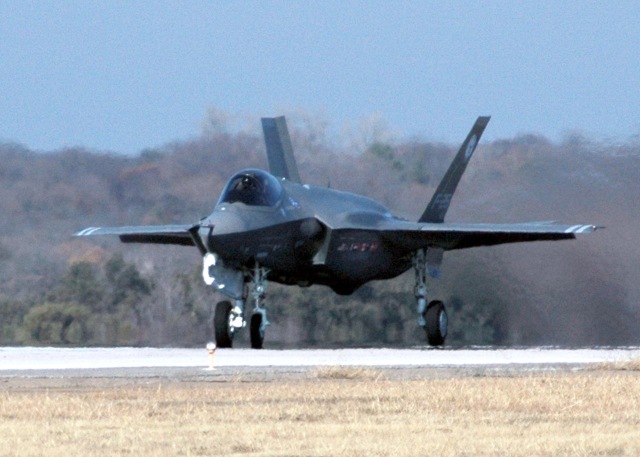The F-35A is expected to cost about 10% more to operate than the F-16 it is intended to replace for the U.S. Air Force and other international military services, according to U.S. government officials.

USAF Lt. Gen. Christopher Bogdan, program executive officer overseeing the F-35 program, told Dutch government officials that the cost per flying hour for the F-35A, which The Netherlands intends to buy, is $24,000, according to Capt. Natasha Waggoner, an Air Force spokeswoman. Bogdan provided the data to Dutch legislators, including a “side-by-side comparison of flying hour costs between the F-16 and the F-35,” she says.
She says Bogdan characterized the figures as “preliminary.” Though flight training has begun on the F-35A and testing continues, the data gathered is fresh and does not reflect an entire airframe life’s worth of use.
Ongoing durability testing will help program officials determine whether any parts or systems will require support that is not built into this estimate.
This cost-per-flying-hour figure has been long sought by international buyers of the single-engine Lockheed Martin aircraft, as well as U.S. officials. As the price of the F-35 development has doubled since the contract to Lockheed Martin was issued in 2001 and in-service dates have slipped dramatically, would-be customers have grown increasingly cautious about not only the price to buy the fighter, but also to operate it.
Lockheed Martin vowed at the program’s onset that the F-35 would cost less to operate than the aircraft it is replacing. Earlier this year, company officials said, “We agree the cost per flying hour will exceed that of the F-16.” But Lockheed expects the anticipated total lifetime cost will be less than that of legacy aircraft.
The Netherlands’ plans to buy 85 of the fighters are under review, and officials there said last month they may cut as many as 33 from their purchase.
U.S. Navy officials originally expected the F-35 total life-cycle price to exceed $1 trillion over 50 years of operations, but the U.S. services are looking for efficiencies. The Pentagon’s Cost Analysis and Program Evaluation office estimates that the Pentagon will spend $18.2 billion annually supporting all three F-35 variants, compared to the $11.1 billion it spent on legacy aircraft in 2010, according to the Government Accountability Office.
The F-35 Joint Program Office did not release the cost-per-flying-hour figures for the F-35B, designed for short-takeoff-and-vertical landings, or the F-35C, optimized for carrier-based use. Those are expected to be released in the annual selected acquisition report expected to go to Congress in May or June.
Enregistrer un commentaire